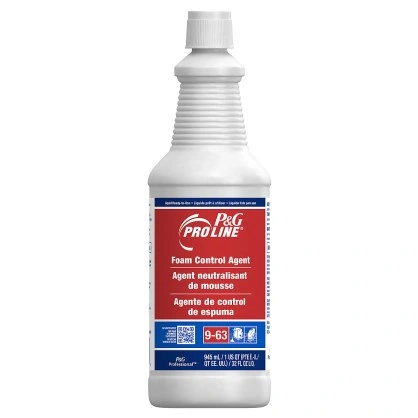How to Achieve Optimal Foam Control for Improved Production Effectiveness
How to Achieve Optimal Foam Control for Improved Production Effectiveness
Blog Article
A Comprehensive Overview to Applying Foam Control Solutions in Your Procedures
Effective foam control is a crucial facet of operational efficiency that usually goes ignored. Recognizing the complexities of foam generation can considerably affect both performance and item quality. This guide lays out the various challenges postured by foam and the diverse services readily available, providing a structure for selecting and applying the most appropriate strategies. By taking a look at key variables such as application compatibility and workers training, organizations can optimize their foam management initiatives. As we discover these elements, the capacity for transformative enhancements in your operations becomes evident. What steps will you take next?
Understanding Foam Challenges
Foam difficulties are a significant issue across various sectors, impacting functional efficiency and product top quality. The formation of extreme foam can prevent processes such as mixing, transport, and storage, bring about raised downtime and waste. In sectors like food and beverage, drugs, and petrochemicals, foam can hinder assembly line, causing item variances and contamination risks.
Additionally, foam can block equipment performance, leading to pricey repair services and upkeep. For instance, in wastewater treatment, foam can interfere with clarifier operations, resulting in lower treatment performance and governing compliance problems.
Understanding the underlying causes of foam generation is essential for efficient monitoring. Elements such as surfactants, temperature variations, and frustration levels can all add to foam production. Recognizing these aspects permits sectors to apply targeted methods that decrease foam development while preserving product integrity.
Types of Foam Control Solutions

Mechanical services entail the use of gadgets such as foam skimmers or defoamers. Chemical services, on the other hand, include the application of defoaming agents-- compounds that interrupt the foam framework, leading to its collapse. Foam Control.
Finally, functional methods focus on procedure changes. This might include customizing tools criteria, such as temperature level and pressure, or altering the circulation rates of fluids to minimize foam generation. In addition, carrying out excellent housekeeping methods can additionally reduce foam development by lowering impurities that contribute to foam security.
Picking the suitable foam control remedy entails analyzing the details requirements of the operation, including the kind of process, the attributes of the products involved, and safety factors to consider.
Selecting the Right Products
Picking the ideal foam control products requires a detailed understanding of the specific application and its special difficulties. Variables such as the sort of foam, the atmosphere in which it takes place, and the preferred result all play critical roles in item choice. Foam Control. For instance, in industries such as food processing, it is important to pick food-grade defoamers that adhere to safety laws while successfully managing foam.
In addition, take into consideration the thickness of the liquid where the foam problem exists. Some items are formulated for low-viscosity applications, while others are customized for thicker fluids. click here now Compatibility with existing procedures is another crucial element; the picked foam control agents need to incorporate effortlessly without disrupting total operations.
An additional essential factor is the approach of application. Some items might need dilution, while others can be applied straight. Analyzing the ease of usage and the needed dosage can give understandings right into the product's efficiency and cost-effectiveness.
Execution Techniques
Successful execution techniques for foam control solutions require a methodical approach that straightens product option with operational needs. The very first step involves a complete evaluation of the processes where foam happens, identifying certain areas that require treatment. By involving cross-functional teams, consisting of quality, manufacturing, and design assurance, companies can gather understandings that inform the selection of the most efficient foam control products.
Next, it is critical to develop clear objectives for foam reduction, making sure that these objectives are attainable and measurable. This may entail defining appropriate foam degrees and the timelines for implementation. Educating personnel on the residential properties and application techniques of picked foam control representatives is similarly vital, as correct use is crucial for ideal results.
In addition, integrating foam control services right into existing process needs careful preparation. Ultimately, a well-structured method will enhance operational effectiveness while effectively taking care of foam-related obstacles.
Monitoring and Assessing Effectiveness
Surveillance and reviewing the performance of foam control services is necessary for making certain that implemented approaches generate the preferred outcomes. This process involves methodical information collection and analysis to evaluate the efficiency of foam control representatives and methods. Trick efficiency indicators (KPIs) must be established before execution, permitting for a clear baseline against which to determine try this development.

Examining effectiveness likewise calls for regular evaluations of foam control treatments and agent efficiency. This can be accomplished via tasting and testing, allowing operators to establish if present options are satisfying operational needs. Additionally, it is important to get comments from staff member that engage with these systems daily, as their understandings can expose operational nuances that quantitative data might forget.

Inevitably, a structured monitoring and assessment framework helps determine this hyperlink required modifications, guaranteeing that foam control services remain reliable, inexpensive, and straightened with business goals.
Conclusion
In verdict, effective foam control solutions are necessary for optimizing functional efficiency and preserving product high quality. A comprehensive understanding of foam obstacles, combined with the option of ideal products and implementation approaches, helps with the effective monitoring of foam generation.
Executing excellent housekeeping practices can likewise minimize foam formation by minimizing impurities that contribute to foam stability.
Selecting the right foam control products calls for a thorough understanding of the particular application and its one-of-a-kind challenges (Foam Control).Successful implementation methods for foam control solutions require a methodical technique that straightens item selection with operational requirements.In final thought, reliable foam control remedies are essential for optimizing operational effectiveness and preserving item top quality. A detailed understanding of foam challenges, combined with the selection of suitable products and implementation techniques, helps with the successful management of foam generation
Report this page